The Be Quiet! SFX-L Power 500W PSU Review: Powerful, Small, & Still Quiet?
by E. Fylladitakis on November 13, 2017 8:30 AM ESTExternal Appearance
An experienced eye will instantly identify that the SFX-L Power 500W is significantly longer than a standard SFX PSU. The chassis is measuring 125 × 63.5 × 130 mm / 4.92 × 2.5 × 5.12 in (W×L×D), which is 30 mm deeper than a standard SFX-compliant unit. Be Quiet! forgoes the SFX specification limits for their 500W and 600W SFX units to fit 120 mm fans, as acoustics performance is of utmost importance to the company. We have seen what high-output SFX units can do with 80 mm fans, so we are hoping to see the SFX-L Power 500W doing better.
The Be Quiet! SFX-L Power 500W PSU is a very subtle, all-black design. The chassis is sprayed with a matte black paint, the connectors/plastics are all black, and even the fan’s finger guard is satin black. Only the chrome letters and surround of the round company badge at the center of the guard breaks the monotony. The company name is embossed on the right side of the unit and a sticker with its electrical specifications and certifications can be found on the left.
On the rear side of the Be Quiet! SFX-L Power we can see an AC cable receptacle and a small switch. The switch is actually a surprise, as many manufacturers omit them on their SFX units due to space limitations. The front side is filled with the connectors for the modular cables, plus a peculiarly simplistic sticker that serves as a very basic legend. All of the cables, including the PCIe and the CPU 12V cables, have different connectors and cannot be mismatched.
Internal Design
The highlight of this PSU, the 120 mm fan, is made by Globe. It is a low-profile model with a high quality fluid dynamic bearing (FDB) engine. FDB fans are frequently used for applications where longevity needs to be combined with low noise operation. It has a maximum speed of about 1850 RPM at 12 Volts. Keep in mind that there is no correlation between the performance of low-profile fans and normal 25 mm wide fans, as their aerodynamic characteristics differ greatly. You should not compare the airflow or acoustics of this fan to any 25 mm wide fan simply because they share a similar rotational speed. The narrow, multi-bladed model that Be Quiet! is using will have relatively good airflow but very poor static pressure characteristics.
Be Quiet! entrusted their SFX units to High Power, a known OEM who often is behind the German company’s PSUs. High Power is also often referred to as “SIRFA”, which is their parent company. We frequently find their platforms in middle and high output designs.
The filtering stage begins at the back of the AC receptacle and continues onto the main PCB, with a total of four Y capacitors, two X capacitors, and two filtering inductors packed closely together. A single rectification bridge can be found on the very basic, unpainted heatsink. A bulky 420V/390μF capacitor from Rubicon wrapped in heatshrink and a shielded inductor are the passive components of the APFC stage.
Two MOSFETs are the active components of the LLC resonant half-bridge primary inversion stage. The secondary side MOSFETs that generate the single 12V line are placed on the underside of the PCB, with thermal pads assisting their cooling by transferring a portion of their thermal losses to the chassis. The two silver heatsinks that can be seen near the connectors PCB cover most of the cooling needs of the secondary side MOSFETs. The 3.3V and 5V lines are being generated “on-demand” via DC-to-DC conversion circuits.
The heatsinks inside the Be Quiet! SFX-L Power 500W unit are relatively small, even for an SFX PSU, but they should provide more than enough heat dissipation surface for the cooling needs of the unit. Most of the capacitors on the main PCB are electrolytics, with just a few polymer capacitors behind the minor voltage line filtering inductors. Several more polymer capacitors can be found onto the connectors PCB, filtering the outputs of the unit. All of these capacitors are supplied by Nippon Chemi-Con, one of the most reputable Japanese manufacturers.


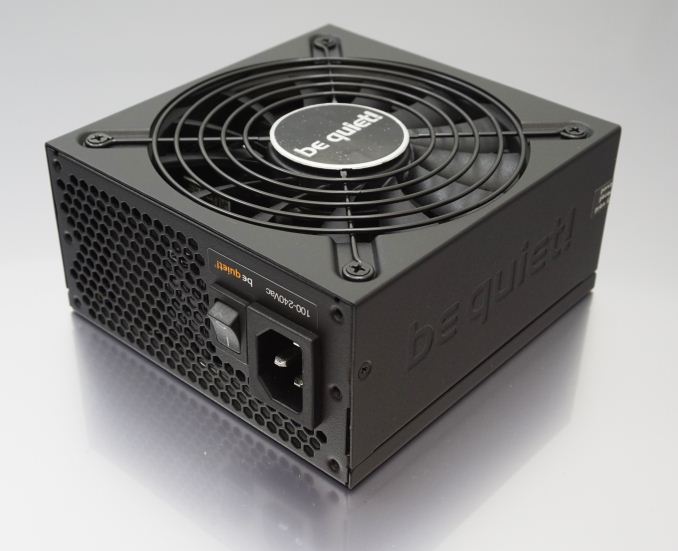
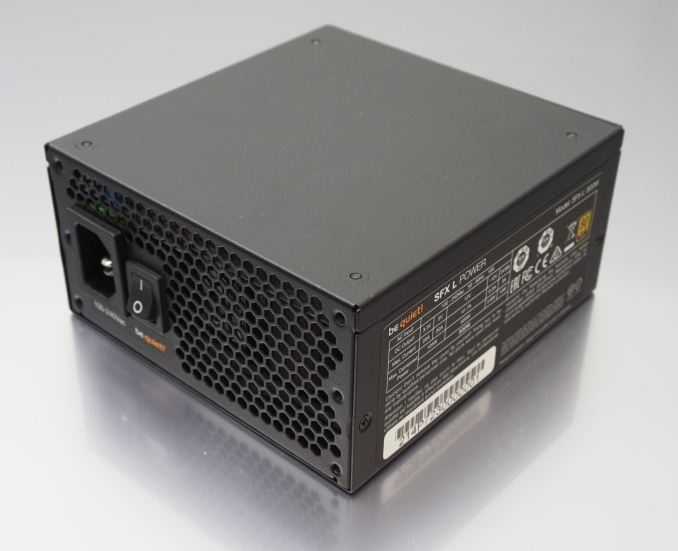
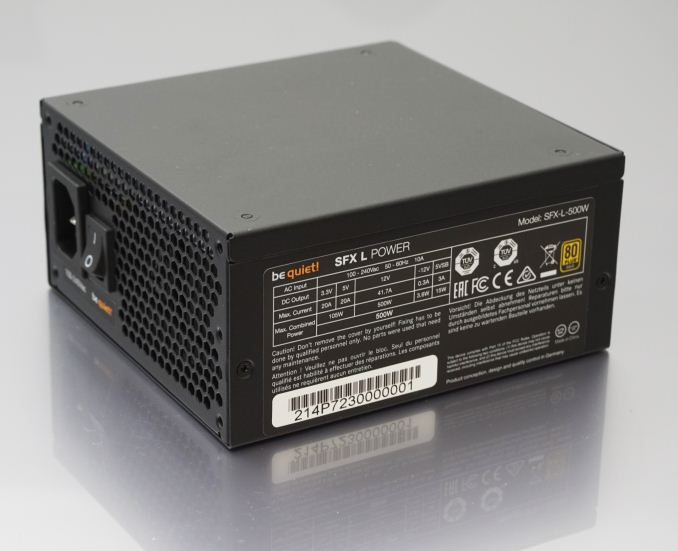
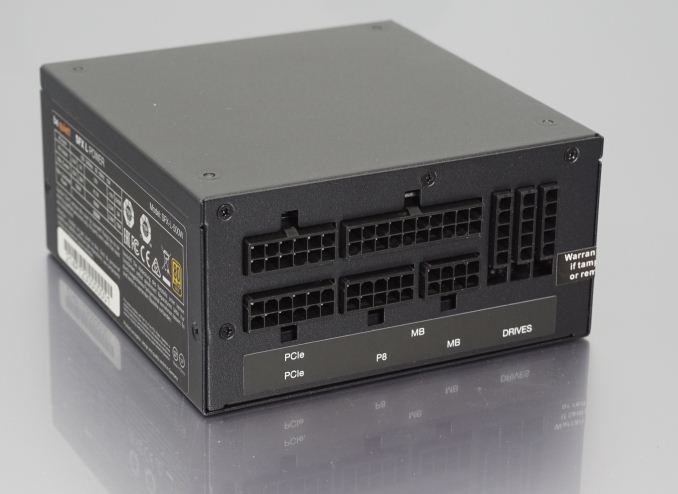
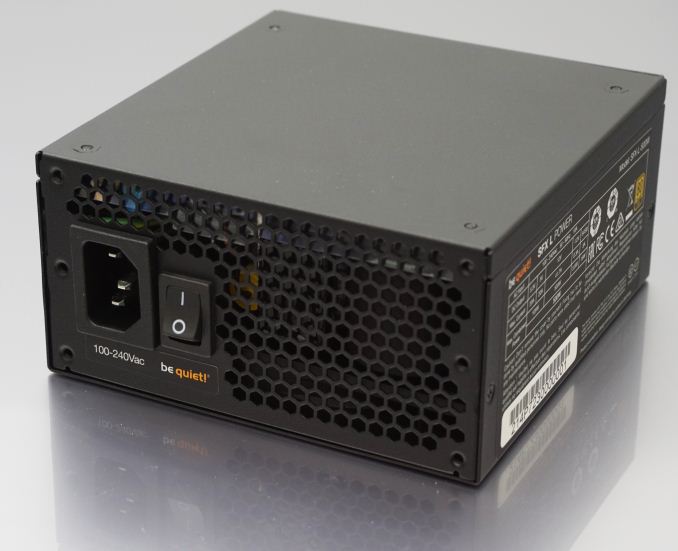
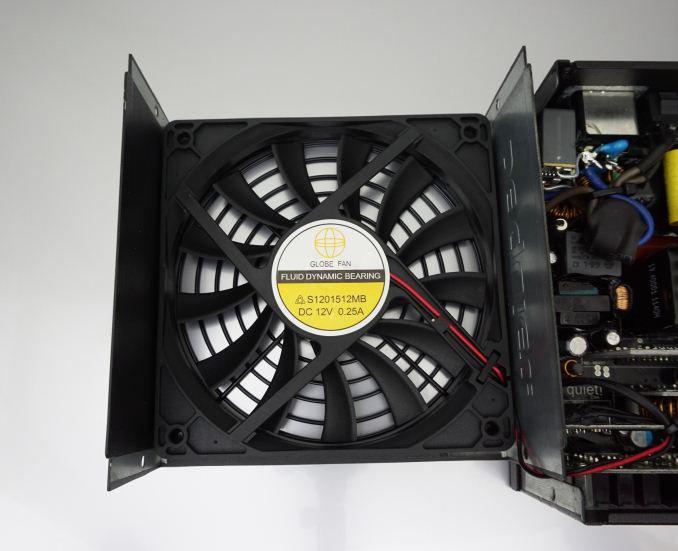
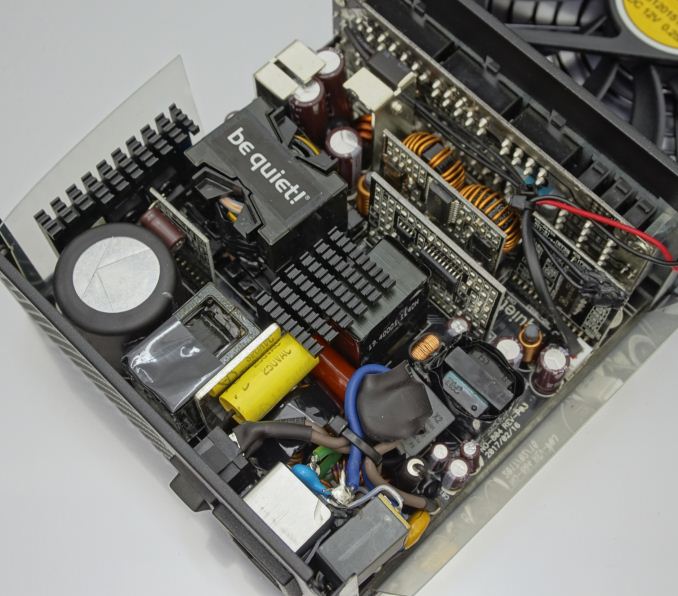
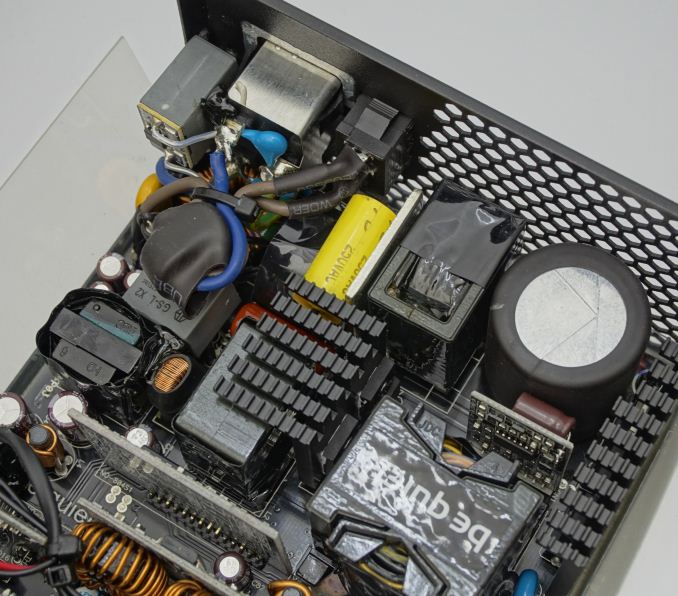
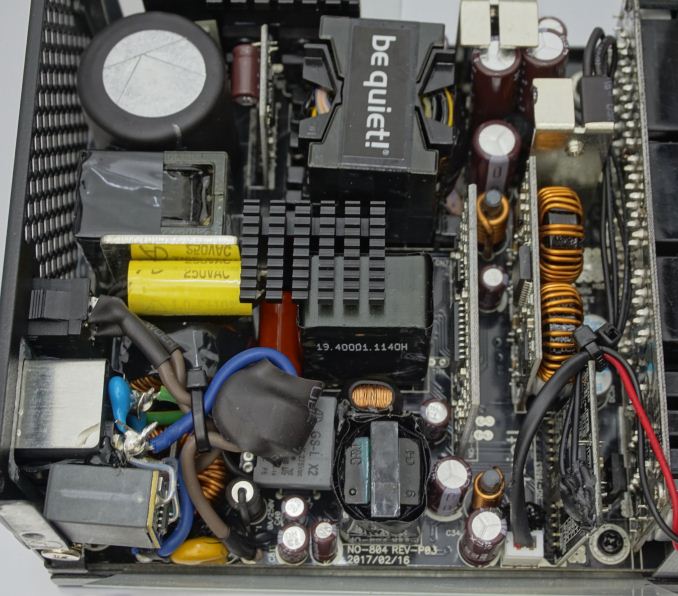
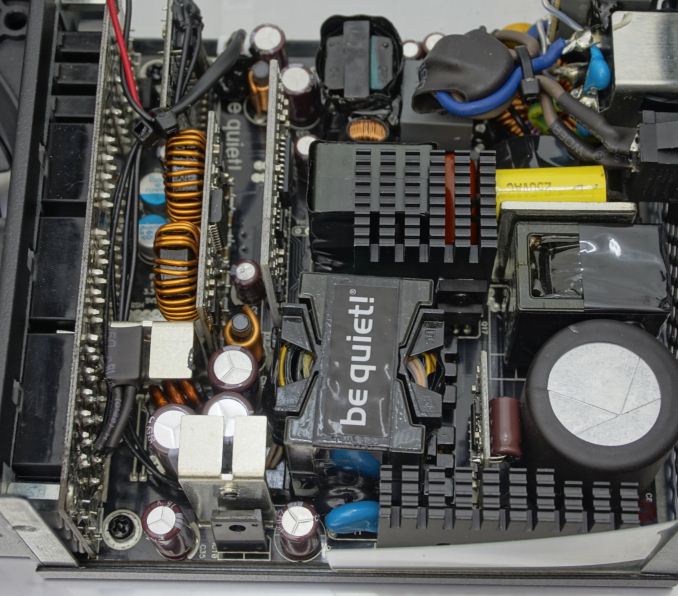
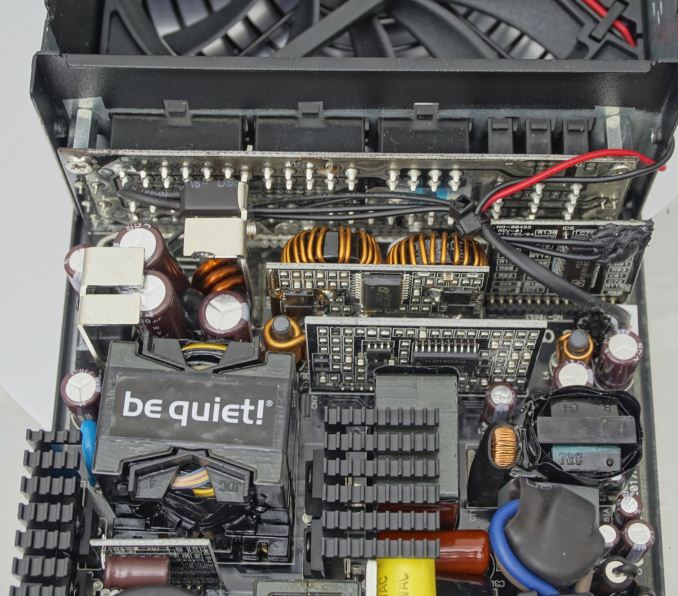








8 Comments
View All Comments
u.of.ipod - Monday, November 13, 2017 - link
Nice review! Any plans to review the new Silverstone SFX models with 500w/650w capacities?jrs77 - Monday, November 13, 2017 - link
I have the Silverstone SFX-L 500, which seems to be more or less the same PSU as this one.Samus - Tuesday, November 14, 2017 - link
Ditto. Great PSU. I've had a number of SFX Silverstone PSU's over the years and all have been excellent.MrSpadge - Monday, November 13, 2017 - link
You're clearly putting effort into the reviews and graphs. Yet you still don't mention the voltage at which the units were tested for efficiency. I know it can be found in that 2014 pipeline post you linked to. But how many readers are not going to look that up and may expect testing at 110 V, because they're from the US, and be disappointed when they find out the good numbers shown by AT don't match their reality?meacupla - Monday, November 13, 2017 - link
Oh, nice. Someone thought to use a FDB fan in the PSU.Other pricey options out there, like Corsair's SF line, still insist on using sleeve bearings, for some reason.
Samus - Tuesday, November 14, 2017 - link
They wanted it to be quiet. They didn't say anything about it lasting more than 50,000 hours ;)PeachNCream - Tuesday, November 14, 2017 - link
That's still almost 6 years of non-stop operation! (o.O) I'm sure there's cases where people are running decade old power supplies and someone reading the comments will say as much, but if you turn your PC off when you're not using it or just run it for 8 hours a day, 50,000 hours could be like 17 years.Brian_R170 - Tuesday, November 14, 2017 - link
Not all FDBs are the same (Not sure which one is actually used in the Globe Fan in this PSU) and not all are actually manufactured better than sleeve bearings.Corsair's SF-series and Enermax Revolution PSUs with sleeve bearings are semi-passive. For many users, that will translate to lower noise and longer life than an FDB fan that runs all the time. I'm somewhat disappointed that the Be Quiet! doesn't have a semi-passive mode since "acoustics performance is of utmost importance to the company".